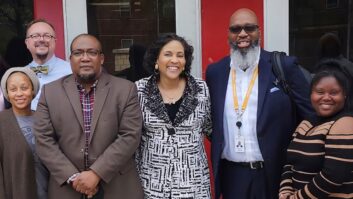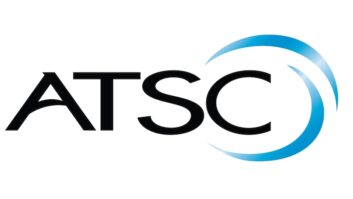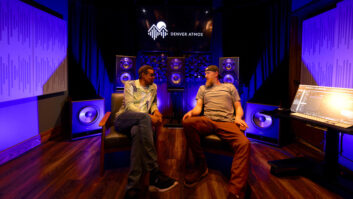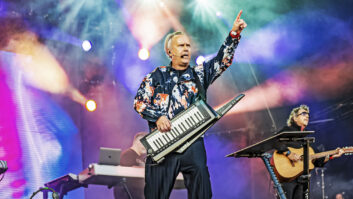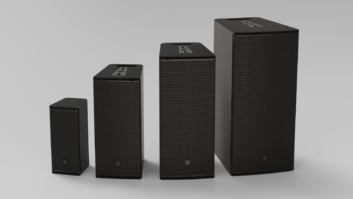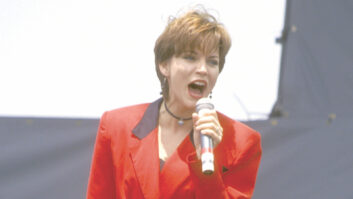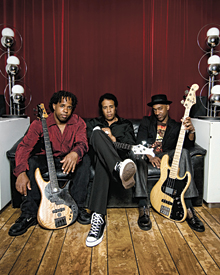
S.M.V. are (L-R) Victor Wooten, Stanley Clarke and Marcus Miller.
Photo: Steven Parke
Back in the day, one name symbolized the highest level of funk/fusion electric bass playing — Stanley Clarke. As co-leader of the pioneering group Return to Forever with keyboardist Chick Corea and as a solo performer, Clarke elevated the artistry of his instrument while also dazzling audiences with solos that rivaled the most scintillating rock guitarists. The Philadelphia native — a classically trained double-bassist whose jazz credentials include working for sax legends Stan Getz and Joe Henderson, pianist Horace Silver and others — was clearly in a class by himself in the electric arena.
In recent years, two emerging players — Marcus Miller and Victor Wooten — have been strongly influenced by Clarke and have challenged his throne. Miller started out with saxophonist David Sanborn, then went on to become a wunderkind player/producer/arranger for iconic trumpeter Miles Davis, as well as for soulful balladeer Luther Vandross and funk/pop dynamo Chaka Khan. Wooten is a longstanding member of virtuso banjoist Béla Fleck’s eclectic Flecktones and a solo artist possessing astounding style and technique.
Eventually, Clarke, Miller and Wooten became acquainted with each other, and the concept of working together arose. During the 2006 Bass Player Live! concert in New York City (sponsored by Bass Player magazine), which included the presentation of a Lifetime Achievement Award to Clarke, they converged to play the honoree’s most popular tune, “School Daze.” The audience was blown away, and so S.M.V. (Stanley, Marcus and Victor) was born. Wooten conceived their new album, Thunder, to be similar to the groundbreaking 1996 acoustic fusion guitar recording, John McLaughlin, Al DiMeola, and Paco DeLucia.
“The main thing for me was to make sure it was musical,” Wooten explains during a solo tour. Many of his parts were recorded at his home studio in Nashville through a Soundcraft board to Pro Tools. “We knew that we had to please the bass players who wanted to hear us cut loose. But we also wanted to make sure the project was good music that someone could listen to over and over again. Also, making sure there was a good dosage of Stanley, Marcus and myself.”
Preliminary recording on this funky, playful affair began several weeks before Christmas 2007 at Threshold Sound + Vision Studios in Santa Monica, Calif. Miller was the main producer and selected the studio (where he works regularly). During the initial meeting and jams, he assigned everyone the task of writing two songs. Then, before the January and February 2008 recording sessions, each sent others his compositions and comments.
“When we finally got together again, we had a good amount of tunes ready to go,” Miller comments from New York. “Half the album was recorded in the studio, and sometimes we did it as a trio playing along with the composer’s track. Other times, we just cut the tracks live. The demos are hilarious because you get to hear us doing imitations of each other.” Unquestionably, the bassists had plenty of fun working together, often joking around, while also being very respectful, especially to Clarke.
Gerry “The Gov” Brown, who was Clarke’s engineer for his 2007 Toys of Men CD, and is well-known for work on high-profile urban and pop recordings, handled the tracking dates at Threshold, which is equipped with a Neve 8078 console, API preamps, Augspurger mains, Pro Tools HD3, and a strong selection of new and vintage mics and outboard gear. Additionally, he recorded sessions for Thunder at Westlake in Los Angeles, the House of Blues Studio in Encino (mostly for its mic selection) and in Clarke’s Topanga Canyon dining room for acoustic tracks.
“In terms of the sound, I had three bass players to worry about and I tried to keep it as organic as possible,” Brown says. “I tried to put each one of them in a different space. Stanley’s sound has a high and a low [range], Victor is more in the lower to middle range, and Marcus has a full range in the middle.” Miller adds, “Everyone pretty much had their sound together, and you don’t want them to sound any different from the way they have previously. Victor usually goes direct, Stanley has an Alembic preamp that he uses and sometimes an amp, and I usually go direct.”
With concurrent tours, other projects and a Return to Forever reunion tour looming, the producer’s organizational talents kept everyone focused. Miller and Brown were in constant contact throughout, with the engineer cleaning things up and doing rough mixes while Miller determined what else was needed to complete tracks. Brown ended up doing final mixes on half the selections at Threshold and provided guidelines for Goh Hotoda, David Isaac and David Rideau, the outing’s other mixers. The project was just about completed when the RTF tour went into full gear. Even so, Miller flew up to Seattle to record additional tracks from Clarke and Chick Corea for finishing touches on Wooten’s “Mongoose Walk.” True collaboration in action.

